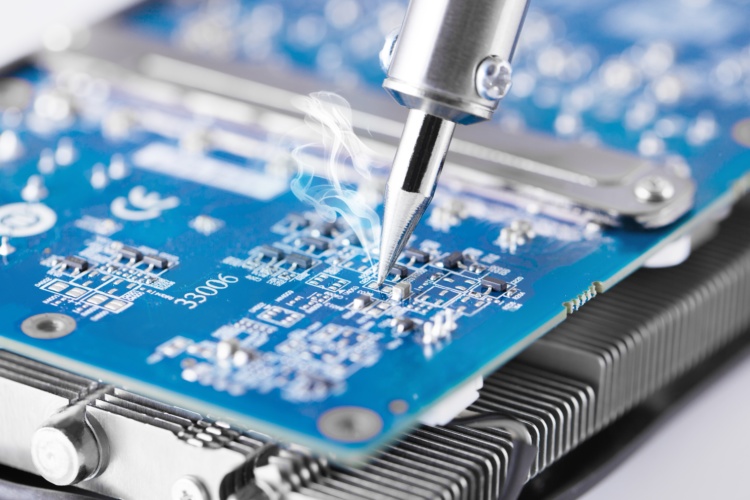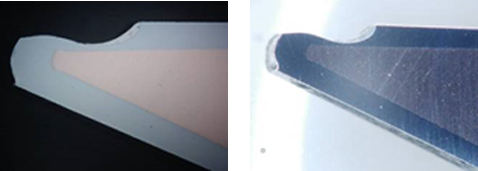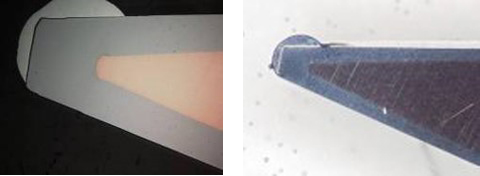
Solving solder wire challenges with Koki’s 72M series
Similarly to other industrial sectors, electronics manufacturers are always looking for solutions to ongoing issues and more efficient production methods.
One such demand is the need for more cost-effective solder wires. Typically, standard un-leaded solder alloys used for hand soldering wires are very aggressive and ‘eat’ soldering iron tips. As components get smaller due to design and space limitations, soldering iron tips have become more sophisticated and much more expensive…

Examples of soldering tip erosion rates, one of the biggest solder wire challenges manufacturers face today
One of our partners, the soldering solutions provider, Koki, is at the forefront of R&D and technical innovation in this field.
Special un-leaded alloys from Koki’s 72M series of solder wires are designed to extend the life of your soldering iron tip by up to four times. During the soldering process, the alloy forms a protective barrier to deter erosion. This, combined with a powerful wetting flux core, allows the operator to run the iron tip at lower temperatures, further improving the tip life, and leading to a significantly more economical manufacturing process.

Example of how Koki’s 72M solder wire creates a protective barrier on the solder iron tip, extending its life for much longer
While that capability alone may make significant improvements for the manufacturer, it is not the only benefit of the 72M series. It also solves a number of other common challenges while maintaining the quality customers expect:
Improved wettability solder wire
Is wettability an issue with your solder wire?
The 72M series has powerful wetting performance due to the introduction of new activators, and a new resin composition allowing better flux coverage. This can more than double the soldering speed, saving time and improving efficiency. The improved wettability applies to copper as well as to nickel and brass, the latter being metals which are generally considered difficult to wet.

Examples of improved wetting and bridging when using the Koki 72M wire compared to other commonly used solder wires
In addition, these wires help prevent bridging, which most often occurs when there is too much solder between joints and an unintentional connection is formed. The solder wire is so powerful it even prevents bridging in defect-prone conditions, such as low iron tip temperatures or fast sliding speed.
Solder wire usability and electrical reliability
Another common issue with solder wires is complicated usability as a result of too much obstructive residue or offensive emissions and odours.
The 72M series produces very low, clear residue and there is minimal spattering. Perhaps most importantly for individual operators, the 72M series emits low fumes, causing minimal irritation.
Crucially for the electronics industry, the wires also offer high electrical reliability. Because the activation level of flux is categorised as ROL0, an IPC classification meaning residue is hard, non-corrosive, non-conductive and may be left on many types of assemblies, the 72M series inhibits electro-migration and secure high surface insulation resistance.
Why choose Koki’s 72M series solder wire?
The 72M range of solder wires solves many of the industry’s key hand-soldering challenges, including tip erosion, wettability, waxy residue and spattering, while maintaining the high quality expected.
Its special low silver and high reliability alloys are compatible for applications in the automotive and aerospace industries, making it an appropriate solution for a wide variety of customers, and an extremely versatile and high-quality product.
98% of our customers have seen the benefits and switched to the 72M series – are you ready to make the change too?
For more information about our range of Koki solder wires, visit our webpage here, or read more about Koki and its products here.
Thank You










Water Sector Talent Exodus Could Cripple The Sector
Maybe if things are essential for the running of a country and we want to pay a fair price we should be running these utilities on a not for profit...